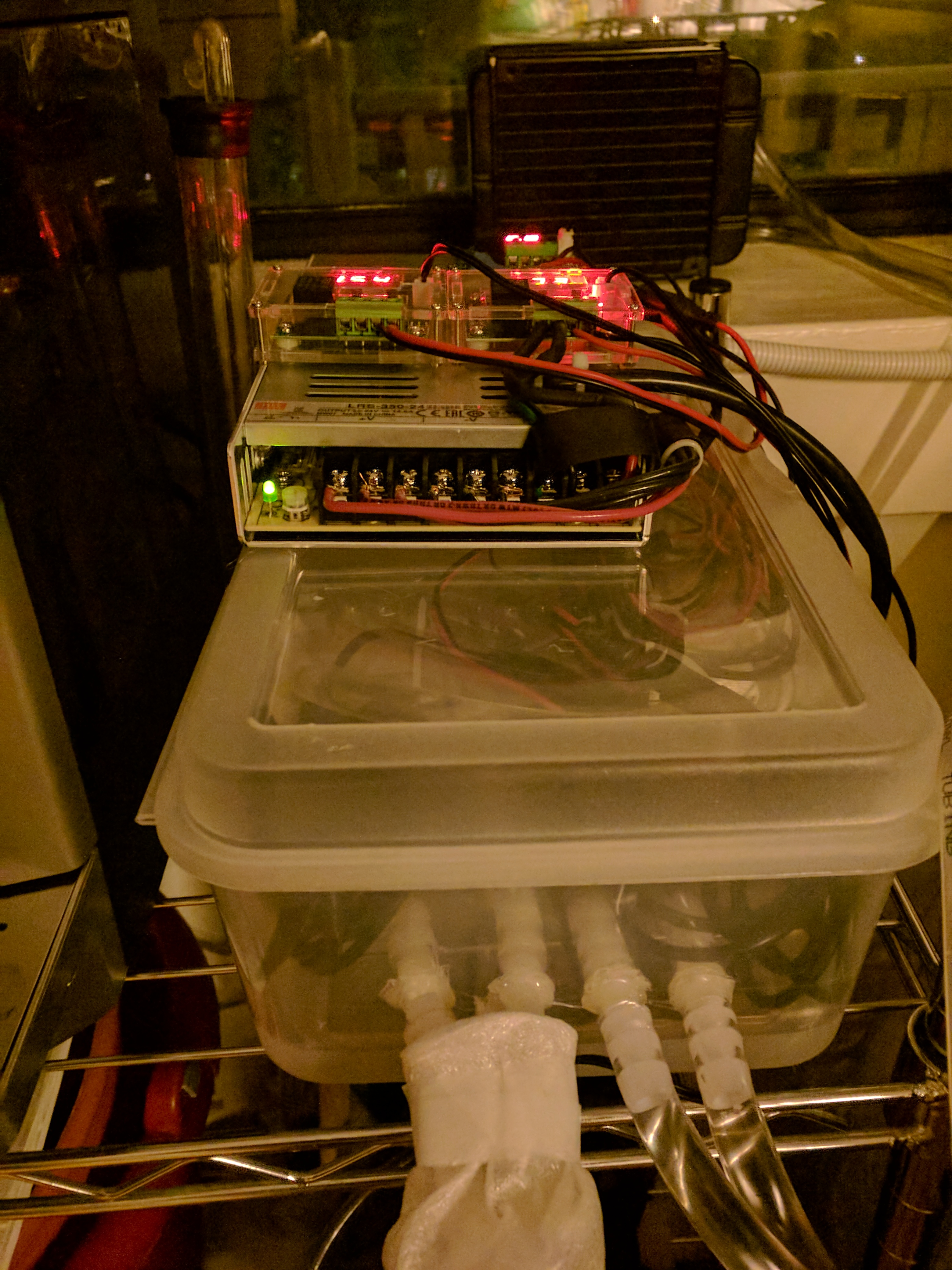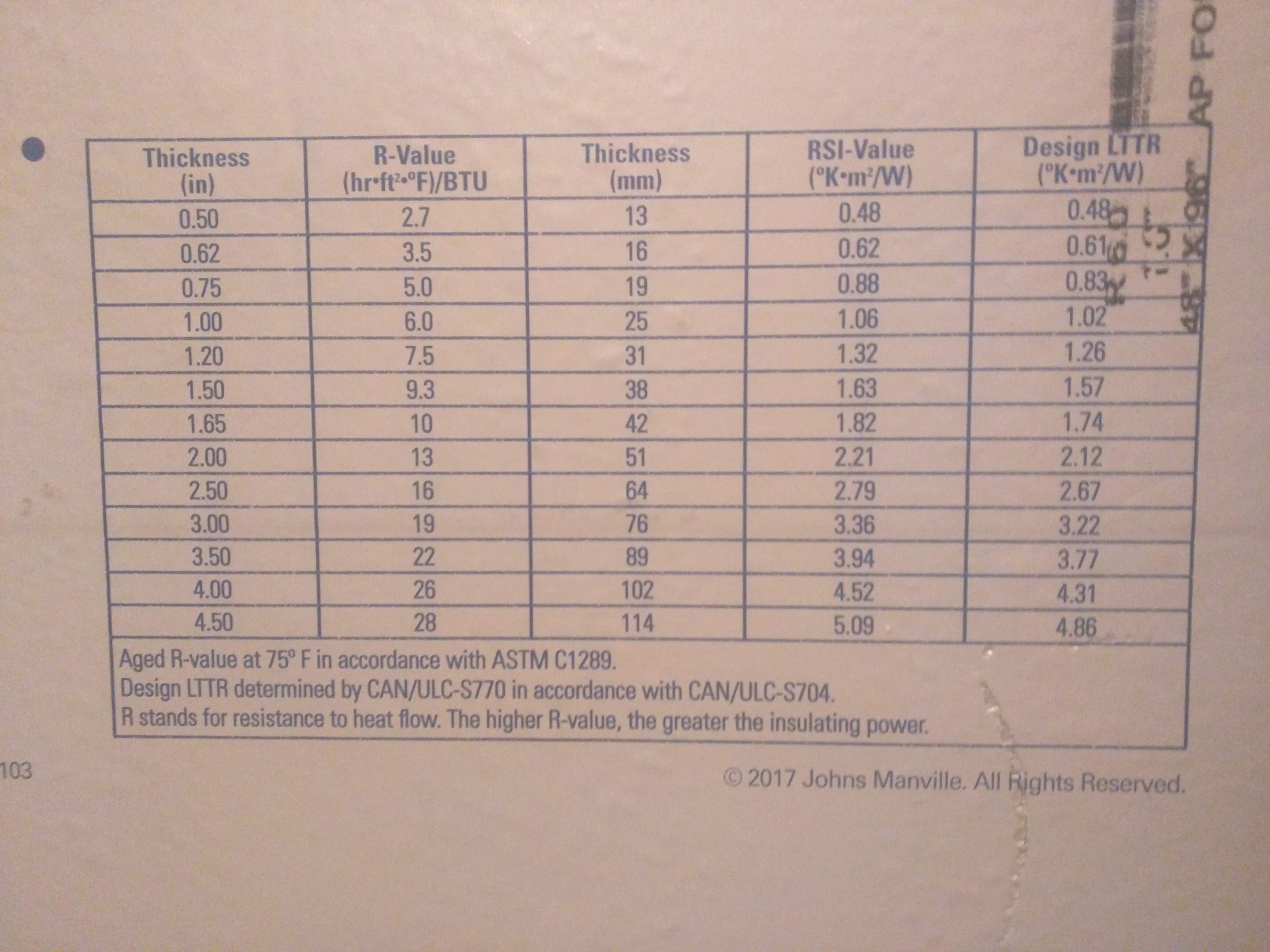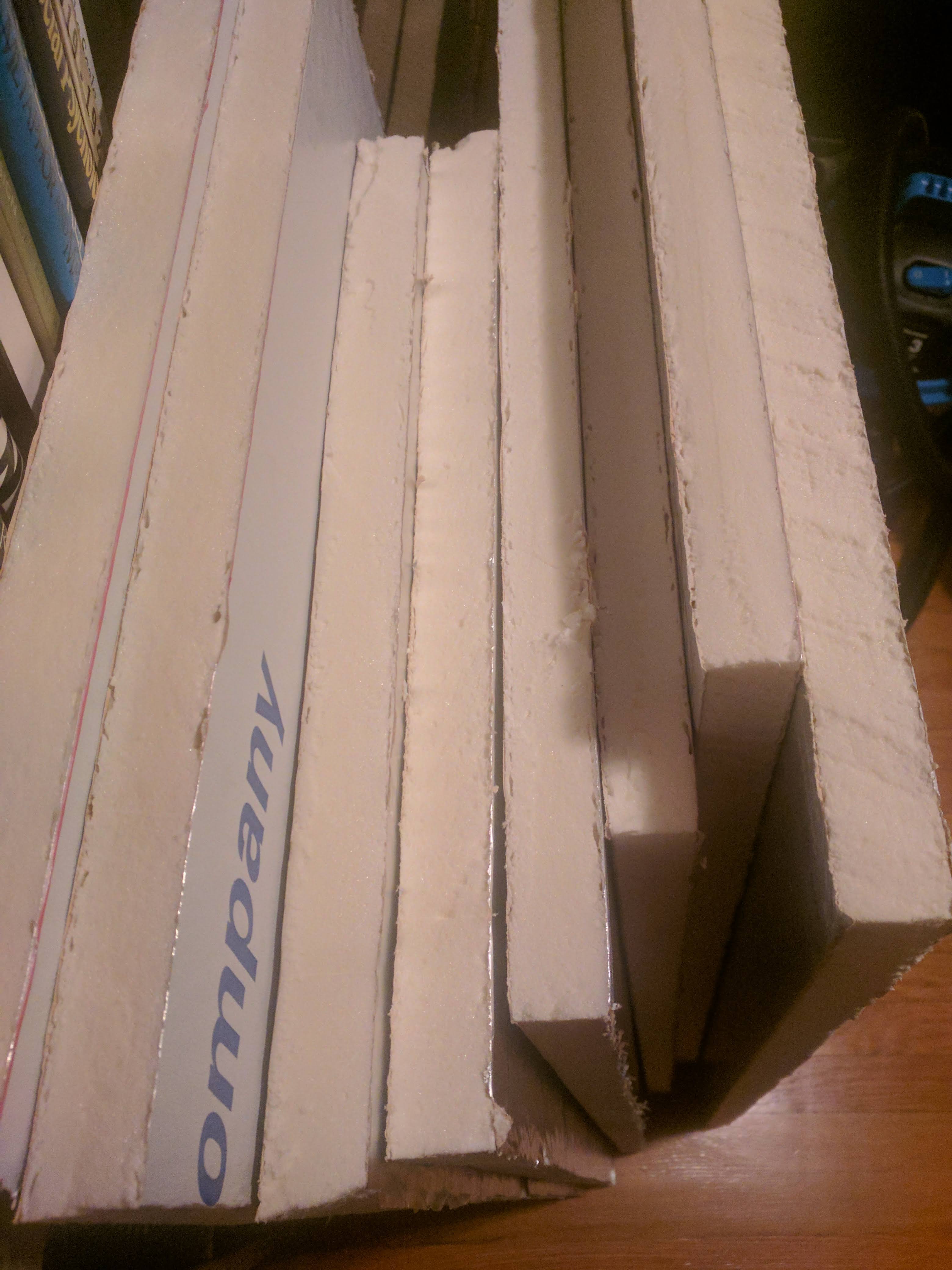Hi, I'm new here. I did a bit of a search for peltier cooled brewing setups, and it sounds like people are not having much luck with them, so I thought I'd post my compact setup that seems to be working ok.
I just started brewing again after a ten year break. For various reasons (smaller fridge; also, marriage) I can't use half the fridge anymore for brewing lagers/pilsners, so I came up with a compact peltier cooled carboy setup. As it turns out, with direct liquid to liquid (to liquid to air, if you include the hot side of the peltiers) heat exchange you can get away with minimal insulation for a glass carboy. (Glass is already somewhat of an insulator.)
Essentially, I'm running three 50W (nominal; at 11V they are probably pulling closer to 40W electrical each) TEC1-12706 peltiers powered by a cheap computer power supply and sandwiched between two water loops driven by small 12V pumps. The cold loop runs through copper piping inside a 5 (or 6, not sure anymore, need to measure) gallon carboy, and has no trouble cooling it to 11C (52F) while fermenting a Pilsner. (The yeast package said 12-15C would be ideal. I seem to remember somewhat lower temps for Pilsner, but decided to follow the instructions for once.)
Ambient temperature is about 22C (72F).
I managed to cram everything but the fermenting vessel inside a small plastic box with cutouts to pull room air in and dump hot air from the hot side radiator and the PC power supply.
The carboy insulation is an old bathrobe, which was temporary until it worked (to quote the Red Green show).
Total budget was about $250, with extra peltiers and power supplies and connectors and such left over.
(I already had the peltiers, radiator, PC power supply and small parts from a previous project, but included them in the bill - see next post.)
The nice thing about using a PC power supply is that the temperature controller only needs to switch the small remote control current to turn the power supply on, not the whole 15A.
Pictures:






I just started brewing again after a ten year break. For various reasons (smaller fridge; also, marriage) I can't use half the fridge anymore for brewing lagers/pilsners, so I came up with a compact peltier cooled carboy setup. As it turns out, with direct liquid to liquid (to liquid to air, if you include the hot side of the peltiers) heat exchange you can get away with minimal insulation for a glass carboy. (Glass is already somewhat of an insulator.)
Essentially, I'm running three 50W (nominal; at 11V they are probably pulling closer to 40W electrical each) TEC1-12706 peltiers powered by a cheap computer power supply and sandwiched between two water loops driven by small 12V pumps. The cold loop runs through copper piping inside a 5 (or 6, not sure anymore, need to measure) gallon carboy, and has no trouble cooling it to 11C (52F) while fermenting a Pilsner. (The yeast package said 12-15C would be ideal. I seem to remember somewhat lower temps for Pilsner, but decided to follow the instructions for once.)
Ambient temperature is about 22C (72F).
I managed to cram everything but the fermenting vessel inside a small plastic box with cutouts to pull room air in and dump hot air from the hot side radiator and the PC power supply.
The carboy insulation is an old bathrobe, which was temporary until it worked (to quote the Red Green show).
Total budget was about $250, with extra peltiers and power supplies and connectors and such left over.
(I already had the peltiers, radiator, PC power supply and small parts from a previous project, but included them in the bill - see next post.)
The nice thing about using a PC power supply is that the temperature controller only needs to switch the small remote control current to turn the power supply on, not the whole 15A.
Pictures:







Last edited:


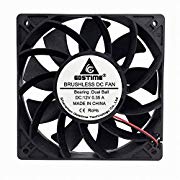


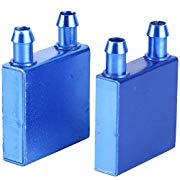
 )
)














![Craft A Brew - Safale S-04 Dry Yeast - Fermentis - English Ale Dry Yeast - For English and American Ales and Hard Apple Ciders - Ingredients for Home Brewing - Beer Making Supplies - [1 Pack]](https://m.media-amazon.com/images/I/41fVGNh6JfL._SL500_.jpg)































































